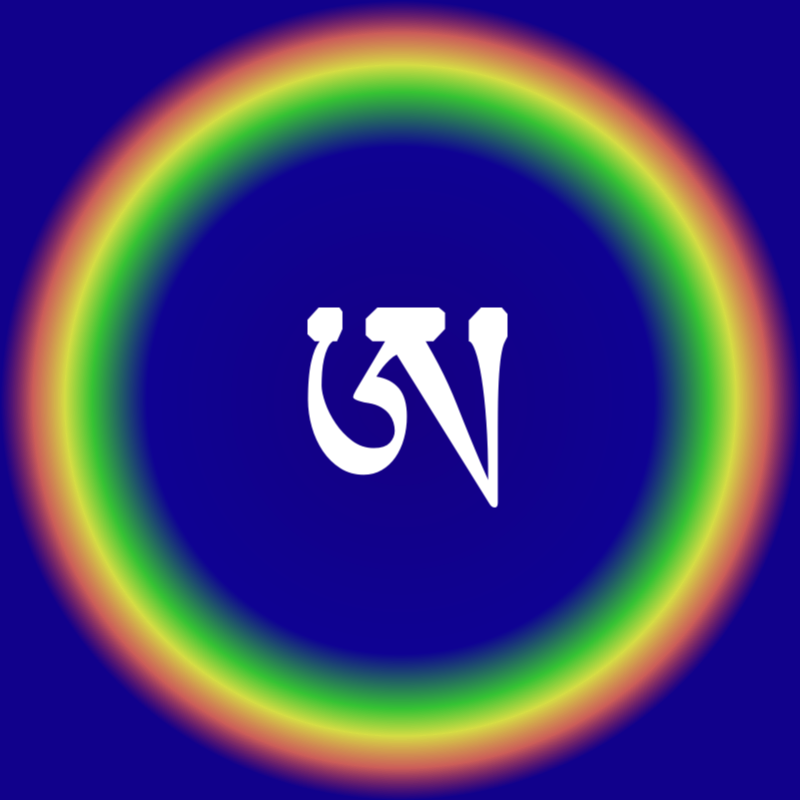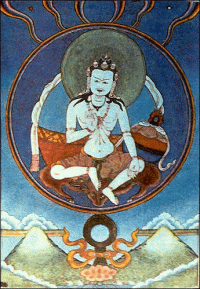|
Vima Nyingthig
Vima Nyingthig (), "Seminal Heart of Vimalamitra", in Tibetan Buddhism is one of the two "seminal heart" () collections of the menngagde cycle Dzogchen, the other one being "Seminal Heart of the Dakini" (''mkha' 'gro snying thig''). Traditionally the teachings are ascribed to Vimalamitra, but they were codified and collated by their Tibetan discoverers in the 11th and 12th century. The main discoverer of the ''Vima Nyingthig'' was Zhangtön Tashi Dorjé.Germano, David; Gyatso, Janet (2001), "Longchenpa and the Possession of the Dakinis", in White, David Gordon (ed.), Tantra in Practice, Motilal Banarsidass Publ.Hatchell, Christopher (2014), ''Naked Seeing The Great Perfection, the Wheel of Time, and Visionary Buddhism in Renaissance Tibet'', p. 54. Oxford University Press History The Vima Nyingthig is founded principally on the seventeen tantras and the Troma tantra.Thondup, Tulku & Harold Talbott (Editor)(1996). ''Masters of Meditation and Miracles: Lives of the Great Buddhist Ma ... [...More Info...] [...Related Items...] OR: [Wikipedia] [Google] [Baidu] |
Tibetan Buddhism
Tibetan Buddhism (also referred to as Indo-Tibetan Buddhism, Lamaism, Lamaistic Buddhism, Himalayan Buddhism, and Northern Buddhism) is the form of Buddhism practiced in Tibet and Bhutan, where it is the dominant religion. It is also in majority regions surrounding the Himalayan areas of India (such as Ladakh, Sikkim, Arunachal Pradesh, and a minority in Himachal Pradesh and Uttarakhand), in much of Central Asia, in the southern Siberian regions such as Tuva, and in Mongolia. Tibetan Buddhism evolved as a form of Mahāyāna Buddhism stemming from the latest stages of Indian Buddhism (which also included many Vajrayāna elements). It thus preserves many Indian Buddhist tantric practices of the post-Gupta early medieval period (500 to 1200 CE), along with numerous native Tibetan developments. In the pre-modern era, Tibetan Buddhism spread outside of Tibet primarily due to the influence of the Mongol Yuan dynasty (1271–1368), founded by Kublai Khan, which had ruled China, ... [...More Info...] [...Related Items...] OR: [Wikipedia] [Google] [Baidu] |
Dzogchen Texts
Dzogchen (, "Great Perfection" or "Great Completion"), also known as ''atiyoga'' ( utmost yoga), is a tradition of teachings in Indo-Tibetan Buddhism and Yungdrung Bon aimed at discovering and continuing in the ultimate ground of existence. The primordial ground (''gzhi'', "basis") is said to have the qualities of purity (i.e. emptiness), spontaneity (''lhun grub'', associated with luminous clarity) and compassion (''thugs rje''). The goal of Dzogchen is knowledge of this basis, this knowledge is called ''rigpa'' (Skt. ''vidyā''). There are numerous spiritual practices taught in the various Dzogchen systems for awakening rigpa. History Dzogchen developed in the Tibetan Empire period and the Era of Fragmentation (9th-11th centuries) and continues to be practiced today both in Tibet and around the world. It is a central teaching of the Yundrung Bon tradition as well as in the Nyingma school of Tibetan Buddhism. In these traditions, Dzogchen is the highest and most defini ... [...More Info...] [...Related Items...] OR: [Wikipedia] [Google] [Baidu] |
Mandala
A mandala ( sa, मण्डल, maṇḍala, circle, ) is a geometric configuration of symbols. In various spiritual traditions, mandalas may be employed for focusing attention of practitioners and adepts, as a spiritual guidance tool, for establishing a sacred space and as an aid to meditation and trance induction. In the Eastern religions of Hinduism, Buddhism, Jainism and Shinto it is used as a map representing deities, or especially in the case of Shinto, paradises, kami or actual shrines. A mandala generally represents the spiritual journey, starting from outside to the inner core, through layers. Hinduism In Hinduism, a basic mandala, also called a ''yantra'', takes the form of a square with four gates containing a circle with a center point. Each gate is in the general shape of a T. Mandalas often have radial balance. A ''yantra'' is similar to a mandala, usually smaller and using a more limited colour palette. It may be a two- or three-dimensional geometric compos ... [...More Info...] [...Related Items...] OR: [Wikipedia] [Google] [Baidu] |
Pure Land
A pure land is the celestial realm of a buddha or bodhisattva in Mahayana Buddhism. The term "pure land" is particular to East Asian Buddhism () and related traditions; in Sanskrit the equivalent concept is called a buddha-field (Sanskrit ). The various traditions that focus on pure lands have been given the nomenclature Pure Land Buddhism. Pure lands are also evident in the literature and traditions of Taoism and Bon. Discussion In the Mahayana sutras, there are many pure lands. Bodhisattvas such as Avalokiteśvara and Manjushri would obtain pure lands after they attained buddhahood. In the ''Lotus Sutra'', Buddha's close followers such as Śāriputra, Mahākāśyapa, Subhuti, Maudgalyāyana and Buddha's son Rāhula would also have pure lands. The relative time-flow in the pure lands may be different, with a day in one pure land being equivalent to years in another. Pure lands have been documented as arising due to the intention and aspiration of a bodhisattva such as the c ... [...More Info...] [...Related Items...] OR: [Wikipedia] [Google] [Baidu] |
Rainbow Body
In Dzogchen, rainbow body (, Jalü or Jalus) is a level of realization. This may or may not be accompanied by the 'rainbow body phenomenon'. The rainbow body phenomenon is pre-Buddhist in origin, and is a topic which has been treated fairly seriously in Tibet for centuries past and into the modern era. Other Vajrayana teachings also mention rainbow body phenomena. Rigpa The rainbow body phenomenon is a third person perspective of someone else attaining complete knowledge (). Knowledge is the absence of delusion regarding the display of the basis. Rigpa has three wisdoms, which are ''kadag'', ''lhun grub'' and ''thugs rje''. Kadag deals with ''trekchö''. The ''lhun grub'' aspect has to do with esoteric practices, such as (but not limited to) tögal, that self-liberate the human body into a Sambhogakāya (rainbow body phenomenon). The symbol of Dzogchen is a Tibetan "A" wrapped in a ''thigle''. The "A" represents ''kadag'' while the ''thigle'' represents ''lhun grub''. The thi ... [...More Info...] [...Related Items...] OR: [Wikipedia] [Google] [Baidu] |
Five Pure Lights
The Five Pure Lights () is an essential teaching in the Dzogchen tradition of Bon and Tibetan Buddhism. For the deluded, matter seems to appear. This is due to non-recognition of the five lights. Matter includes the ''mahābhūta'' or classical elements, namely: space, air, water, fire, earth. Knowledge (rigpa) is the absence of delusion regarding the display of the five lights. This level of realization is called rainbow body. Basis (gzhi) In the basis () there were neutral awarenesses (sh shes pa lung ma bstan) that did not recognize themselves. (Dzogchen texts actually do not distinguish whether this neutral awareness is one or multiple.) This non-recognition was the innate ignorance. Due to traces of action and affliction from a previous universe, the basis became stirred and the Five Pure Lights shone out. When a neutral awareness recognized the lights as its own display, then that was Samantabhadra (immediate liberation without the performance of virtue). Other neutral aware ... [...More Info...] [...Related Items...] OR: [Wikipedia] [Google] [Baidu] |
Bindu (symbol)
''Bindu'' ( sa, बिंदु) is a Sanskrit word meaning "point", "drop" or "dot". Philosophy In Hindu metaphysics, Bindu is considered the point at which creation begins and may become unity. It is also described as "the sacred symbol of the cosmos in its unmanifested state". Bindu is the point around which the mandala is created, representing the universe. Bindu is often merged with eed(or sperm) and ova. In the '' Yogachudamani Upanishad'' Bindu is a duality, with a white Bindu representing ''shukla'' (pure) and a red Bindu representing ''maharaj'' (mastery). The white Bindu resides in the '' bindu visarga'' and is related to Shiva and the Moon, while the red Bindu resides in the ''muladhara'' chakra and is related to Shakti and the Sun. In yoga, the union of these two parts results in the ascension of kundalini to the sahasrara. In Tibetan Buddhism Bindu is a component of the subtle body, which is composed of drops (Tibetan: ཐིག་ལེ ''thig le'') and winds ( ... [...More Info...] [...Related Items...] OR: [Wikipedia] [Google] [Baidu] |
Jnanasutra
There appear to be two Jnanasutras, with different Tibetan orthographies for their names. The first, , flourished from the 5th-6th centuries. According to Dzogchen legends, he was an early Dzogchen practitioner of Vajrayāna Buddhism and a disciple of Sri Singha. This Jnanasutra was a spiritual brother of Vimalamitra, another principal disciple of Sri Singha. According to Tarthang Tulku (1980), the second ''Jnanasutra'' was the principal lotsawa () of the 8th-9th century of the first wave of translations from Sanskrit to Tibetan.Rhaldi, Sherab (undated). 'Ye-Shes-sDe; Tibetan Scholar and Saint'. ''Tibetan & Himalayan Digital Library''. Source(accessed: Wednesday April 1, 2009) In Jigme Lingpa's terma of the ngöndro of the Longchen Nyingthig he writes what approximates the phonemic Sanskrit of 'Jnanasutra' in Tibetan script as , rather than his name in Tibetan and this comes just after a sentence to Sri Singha and before mentioning Vimalamitra. See also *Menngagde In Tibetan ... [...More Info...] [...Related Items...] OR: [Wikipedia] [Google] [Baidu] |
Sri Singha
Sri Singha (Sanskrit: , ) was the teacher of Padmasambhava, Vimalamitra, and Vairotsana. He was a principal student and dharma-son of Mañjuśrīmitra in the Dzogchen lineage, and is credited by the Nyingma school with introducing Dzogchen to Tibet. Life Sri Singha is the son of King 'Accomplisher' and his wife queen Nantakā. A.W. Barber notes that Sri Simha took the Atiyoga lineage to Andhra, in South India. He made his residence at Dhanyakataka. Thus, it would appear that Sri Simha took the Atiyoga line to Andhra and made his residence at the famous Dhanyakataka along the Krishna River. From here it was transmitted to teachers who then took the line to Tibet and China. Achievements Śrī Siṃha brought the Secret Mantra teachings from beneath the Vajra Throne in Bodhgaya to the 'Tree of Enlightenment' in China, where he concealed them in a pillar of the 'Auspicious Ten Thousand Gates Temple'. Śrī Siṃha conferred the Eighteen Dzogchen Tantras (Tibetan: ''rdzogs chen rg ... [...More Info...] [...Related Items...] OR: [Wikipedia] [Google] [Baidu] |
Mañjuśrīmitra
Mañjuśrīmitra (d. 740 CE) () was an Indian Buddhist scholar. He became the main student of Garab Dorje and a teacher of Dzogchen. Nomenclature and etymology Mañjuśrī-mitra was his ordination-name—before ordination he was named "Siddhi-garbha" and " Samvara-garbha" His mother's name was Kuhanā. Birth and early life The exact location of Mañjuśrīmitra's birth is unknown. Mañjuśrīmitra, the son of an upper class Brahmin from a village to the west of Bodh Gaya, was initially schooled at home. Later he was a resident at Nalanda University where he became a respected Yogācāra scholar and practitioner. Works Many of Mañjuśrīmitra's works deal with a tantric text Mañjuśrīnāmasamgīti. He was the person who divided the Dzogchen teachings into three series of Semde, Longdé and Manngagde. In the Tibetan Buddhist Vajrayana tradition, Mañjuśrīmitra is held to have transmitted the Dzogchen teachings to Sri Singha. The "Six Meditation Experiences" (Tibetan: ... [...More Info...] [...Related Items...] OR: [Wikipedia] [Google] [Baidu] |
Garab Dorje
Garab Dorje (c. 665) () was the first human to receive direct transmission teachings from Vajrasattva. Garab Dorje then became the teacher of the ''Ati Yoga'' (Tib. Dzogchen) or Great Perfection teachings according to Tibetan buddhist and Nyingma school traditions. The Tibetan Bon beliefs, which pre-date buddhism, differ in their origin story of Dzogchen. Etymology Garab Dorje (or Garap Dorje) is his only attested name. The Sanskrit offerings are reconstructions. No Sanskrit name has been found in a colophon. That said, John Myrdhin Reynolds cited Prahevajra or Pramodavajra in his book ''Self-Liberation Through Seeing with Naked Awareness'' ig pa ngo sprod gcer mthong rang grol Detail According to the Nyingma school of Tibetan Buddhism, Garab Dorje transmitted the complete empowerments of Dzogchen to Manjushrimitra, who was regarded as his chief disciple. Padmasambhava is also known to have received the transmission of the Dzogchen tantras directly from Garab Dorje. Garab Dorj ... [...More Info...] [...Related Items...] OR: [Wikipedia] [Google] [Baidu] |
.jpeg/1200px-Tibetan_Buddhism_(214837929).jpeg)

.jpg)

